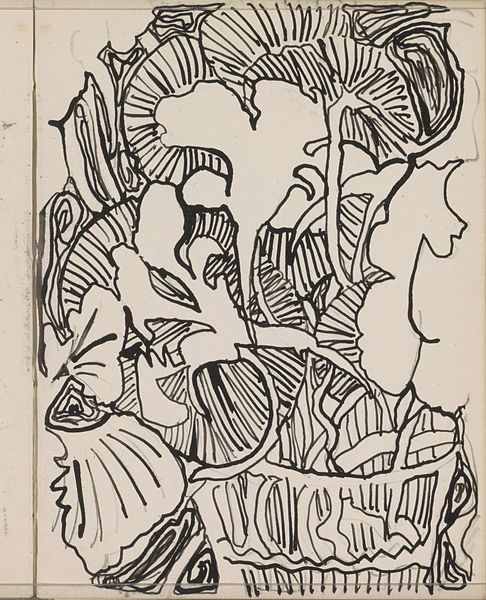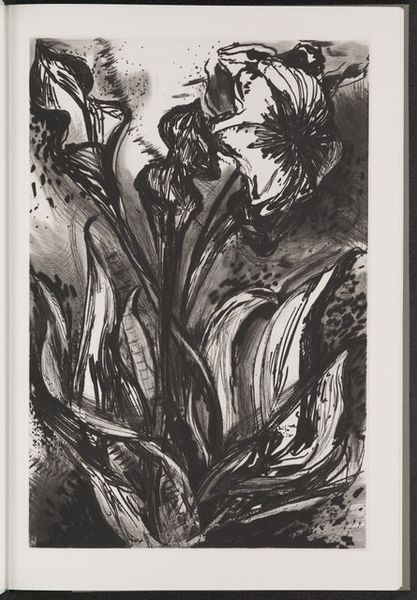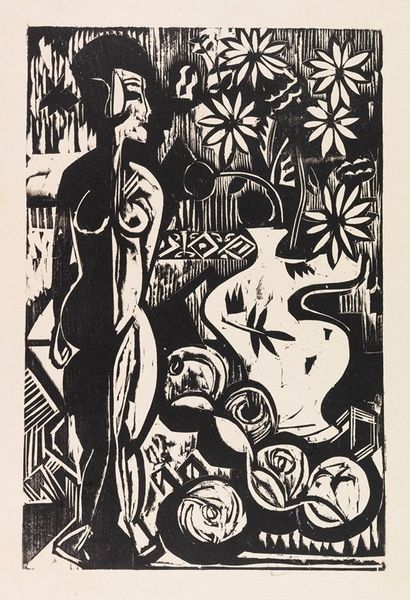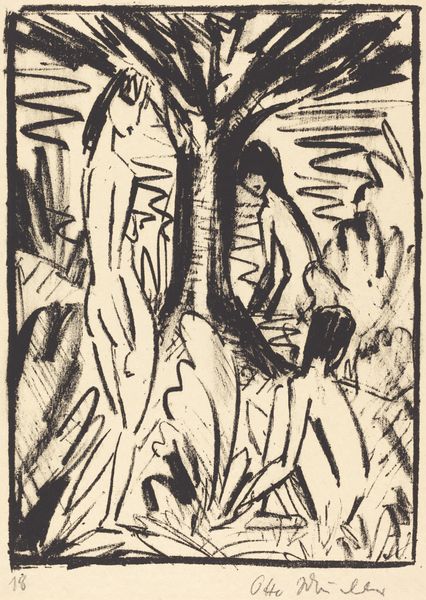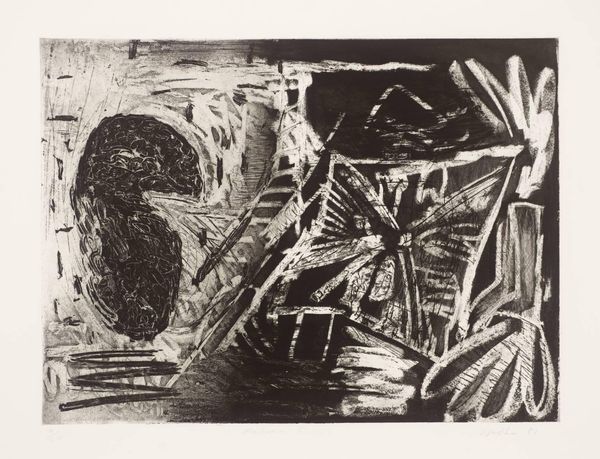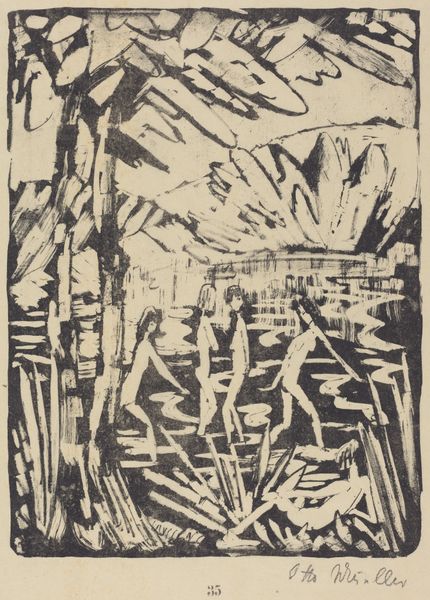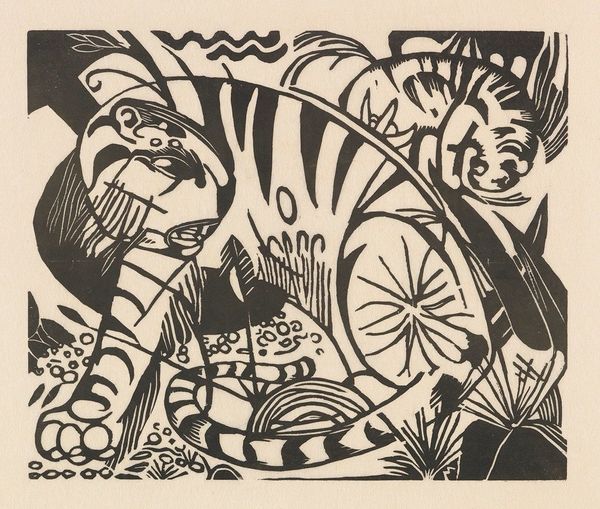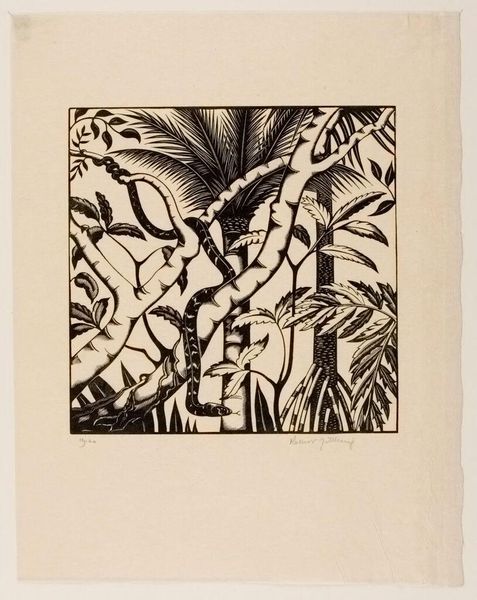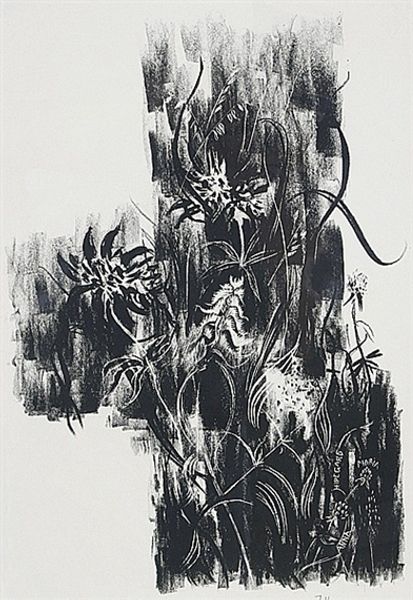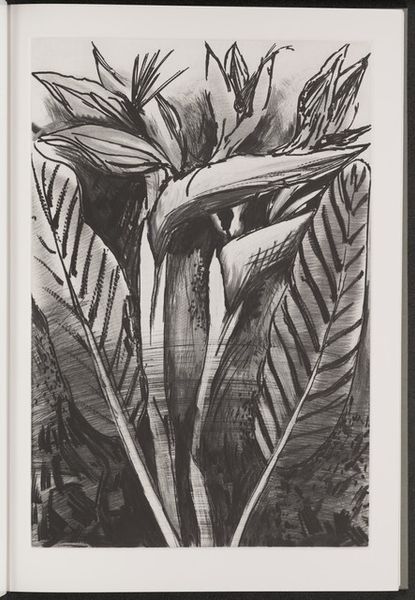
print, woodcut
# print
#
landscape
#
german-expressionism
#
expressionism
#
woodcut
Copyright: Public Domain: Artvee
Editor: This is "Væksthus. Jena" by Ernst Ludwig Kirchner, created in 1914. It's a woodcut print and the sharp contrast gives it such a dramatic, almost claustrophobic feel. What do you see in this piece, considering its historical context? Curator: Kirchner's woodcut is a fascinating study of tension between the natural and the constructed, especially given the moment it was created. Think about 1914 - Europe on the brink of war. What does it mean to depict nature, carefully cultivated and contained within a greenhouse, when the outside world is about to erupt in violence? Editor: So, the greenhouse is not just a greenhouse. Curator: Exactly. The harsh, angular lines and the way the black ink seems to aggressively consume the white space…it reflects a broader societal anxiety. Expressionism, at its core, often grapples with the individual's alienation within a rapidly changing world. Who is the figure lurking within the hothouse environment, a space built specifically for controlled growth? Is he admiring, or supervising? Editor: That makes me wonder about the controlled growth part...maybe it represents society's attempts to control nature, or even control people? Curator: Precisely! Think about the power dynamics at play. Who benefits from this control? Who is excluded? Kirchner's work isn’t just aesthetically striking; it invites us to consider the social and political implications of even the seemingly mundane. Editor: That definitely gives me a lot more to consider about the period. Curator: Right! And this artwork encourages critical engagement with how historical forces impact individual experiences and creative expression.
Comments
No comments
Be the first to comment and join the conversation on the ultimate creative platform.
